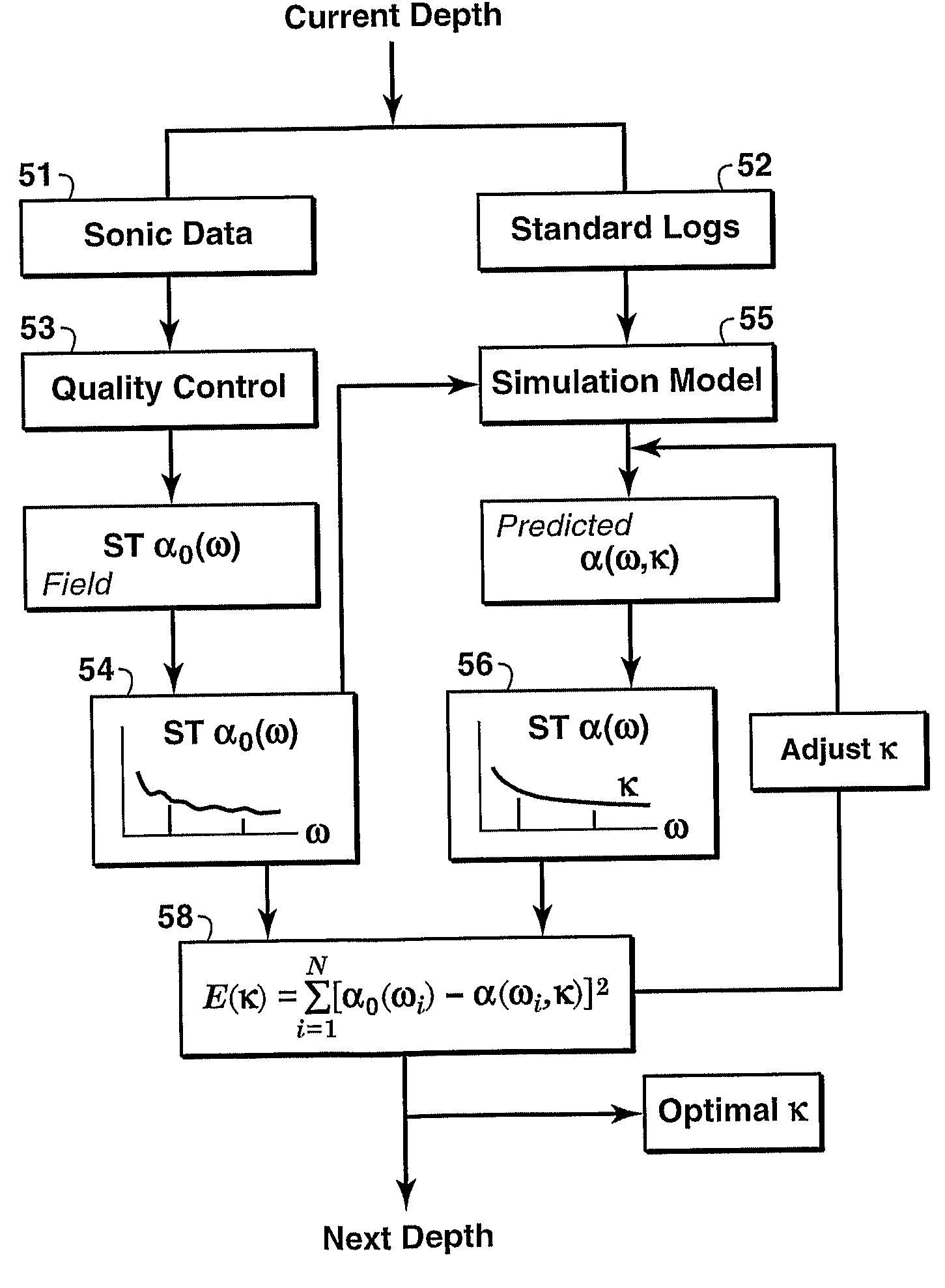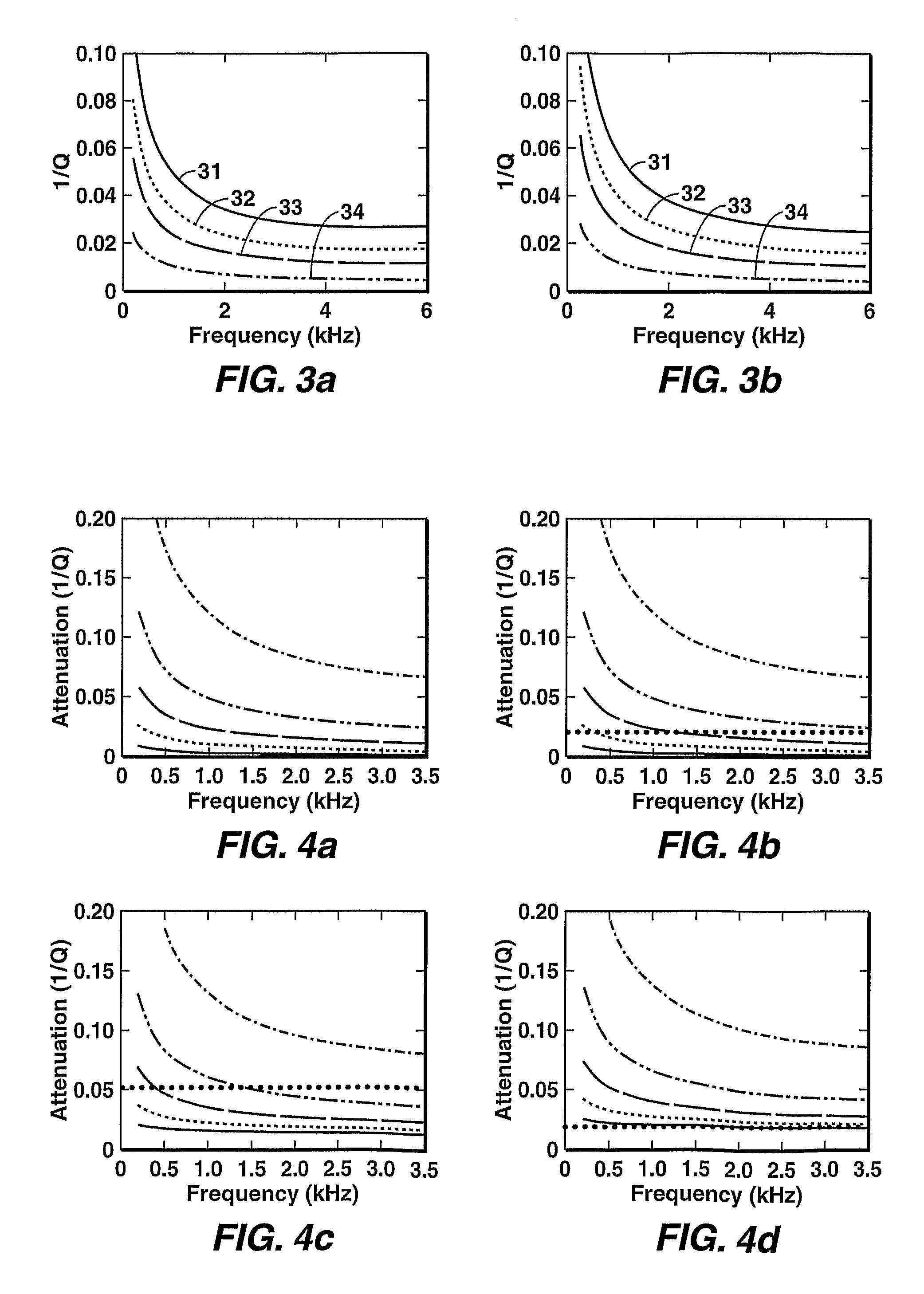Method for determining reservoir permeability form borehole stoneley-wave attenuation using biot's poroelastic theory
a technology of porous rock and reservoir permeability, applied in the field of geophysical prospecting, can solve the problems of no existing tool for readily measuring mud velocity, estimating mud velocity, and practical application of stoneley-wave permeability methods
- Summary
- Abstract
- Description
- Claims
- Application Information
AI Technical Summary
Benefits of technology
Problems solved by technology
Method used
Image
Examples
examples
[0042]A “blind” test was conducted to predict permeability with Stoneley data, and then, compared with the well test results. The sonic data was acquired from an exploration well in West Africa.
[0043]Well “A” was logged by a commercial sonic tool. The sonic data included wideband monopole and cross-dipole waveforms. Overall, the quality of sonic measurements is good, as evidenced by FIGS. 6a and 6b, which show the customary eight monopole full waveforms and the corresponding spectra at a given depth. High amplitude and low-frequency Stoneley waves are prominent. The entire wave energy is located at the low frequency range (a). Then a time window of 1000 μs was used to pick up the Stoneley waves. FIG. 7b shows very nice spectra of Stoneley waves. The Stoneley-wave total attenuation {tilde over (α)}0(ω) is determined by fitting the spectra crossing receivers with e−{tilde over (α)}0zi in frequency domain where zi is the distance between the first receiver (relative to transducer) to t...
PUM
 Login to View More
Login to View More Abstract
Description
Claims
Application Information
 Login to View More
Login to View More - R&D
- Intellectual Property
- Life Sciences
- Materials
- Tech Scout
- Unparalleled Data Quality
- Higher Quality Content
- 60% Fewer Hallucinations
Browse by: Latest US Patents, China's latest patents, Technical Efficacy Thesaurus, Application Domain, Technology Topic, Popular Technical Reports.
© 2025 PatSnap. All rights reserved.Legal|Privacy policy|Modern Slavery Act Transparency Statement|Sitemap|About US| Contact US: help@patsnap.com



